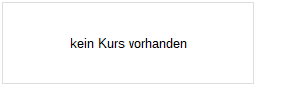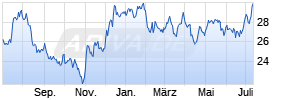
B2Gold Reports Strong Q4 2021 Total Gold Production of 304,897 Oz, Record Annual Total Gold Production of 1,047,414 Oz and 2022 Total Gold Production Guidance of 990,000 - 1,050,000 Oz
PR Newswire
VANCOUVER, BC, January 19, 2022
VANCOUVER, BC, January 19, 2022 /PRNewswire/ - B2Gold Corp. (TSX: BTO) (NYSE AMERICAN: BTG) (NSX: B2G) ("B2Gold" or the "Company") is pleased to announce its total gold production and consolidated gold revenues for the fourth quarter and full-year 2021, in addition to its production and budget guidance for 2022. All dollar figures are in United States dollars unless otherwise indicated.
2021 Gold Production and Revenue Highlights
- Fourth quarter total gold production of 304,897 ounces (including 16,048 ounces of attributable production from Calibre Mining Corp. ("Calibre")) and consolidated gold production of 288,849 ounces from the Company's three operating mines
- Fourth quarter consolidated gold revenues of $526 million on sales of 292,350 ounces at an average realized gold price of $1,800 per ounce
- Record quarterly gold production achieved by the Otjikoto Mine of 78,681 ounces in the fourth quarter
- Record annual total gold production of 1,047,414 ounces (including 59,819 ounces of attributable production from Calibre), marking the thirteenth consecutive year of record annual total gold production
- Consolidated 2021 gold production from the Company's three operating mines of 987,595 ounces, near the top end of its revised guidance range (of between 965,000 – 995,000 ounces) and exceeding the upper end of its original guidance range (of between 920,000 – 970,000 ounces)
- Annual consolidated gold revenues of $1.76 billion on sales of 981,401 ounces at an average realized gold price of $1,796 per ounce
- Record annual gold production achieved by both the Masbate Mine of 222,227 ounces and Otjikoto Mine of 197,573 ounces
- The Company's expects total consolidated cash operating costs (see "Non-IFRS Measures") to be within its guidance range of between $500 and $540 per ounce and total consolidated all-in sustaining costs ("AISC") (see "Non-IFRS Measures") to be at the upper end of its guidance range of between $870 and $910 per ounce
2022 Budget Highlights
- For 2022, B2Gold remains well positioned for continued strong operational and financial performance with total gold production guidance of between 990,000 - 1,050,000 ounces (including 40,000 - 50,000 attributable ounces projected from Calibre) with total consolidated forecast cash operating costs of between $620 - $660 per ounce and total consolidated AISC of between $1,010 - $1,050 per ounce; consolidated cash operating costs per ounce and AISC per ounce are forecast to be higher than 2021 mainly due to higher budgeted prices for fuel, labour and other key consumables (attributable to the current inflationary environment), and a stronger budgeted Namibian dollar while the increase in AISC per ounce is also impacted by moderately higher planned sustaining capital expenditures
- Due to the timing of high-grade ore mining, consolidated gold production from the Company's three operating mines is expected to be significantly weighted to the second half of 2022; for the first half of 2022, consolidated gold production is forecast to be between 390,000 – 410,000 ounces, which is expected to increase significantly to between 560,000 – 590,000 ounces during the second half of 2022
- Following a very successful year for exploration in 2021, B2Gold is planning a year of aggressive exploration in 2022 with a budget of approximately $65 million (excluding Gramalote), including a record $29 million allocated to the Company's ongoing grassroots exploration programs
- An updated mineral resource estimate is expected to be completed for the Cardinal zone (located within 500 metres of the current Fekola resource pit) in the first quarter of 2022
- Based on current assumptions, including a gold price of $1,800 per ounce, the Company expects to generate cashflows from operating activities of approximately $625 million in 2022, expected to be significantly weighted to the second half of 2022
Gold Production
Despite the continuing challenges of the COVID-19 pandemic, B2Gold had another remarkable year of strong operational performance in 2021, with the achievement of B2Gold's thirteenth consecutive year of record annual total gold production. The Company's total gold production for 2021 was an annual record of 1,047,414 ounces (including 59,819 ounces of attributable production from Calibre) (2020 – 1,040,737 ounces), near the top end of its revised guidance range (of between 1,015,000 – 1,055,000 ounces) and exceeding the upper end of its original guidance range (of between 970,000 – 1,030,000 ounces). Consolidated gold production from the Company's three operating mines was 987,595 ounces (2020 - 995,258 ounces), near the top end of the revised guidance range (of between 965,000 – 995,000 ounces) and exceeding the upper end of the original guidance range (of between 920,000 – 970,000 ounces), with solid performances from the Company's three mines (see "Operations" section below), including both the Masbate and Otjikoto mines achieving record annual gold production in 2021. In addition, the Fekola Mine achieved another strong year in 2021, producing 567,795 ounces of gold, near the top end of its revised guidance range (of between 560,000 and 570,000 ounces) and exceeding the upper end of its original guidance range (of between 530,000 and 560,000 ounces).
The Company is currently compiling its final cash operating costs and AISC results for 2021 and will release its fourth quarter and full-year 2021 financial results after the North American markets close on Tuesday, February 22, 2022. For full-year 2021, the Company's total consolidated cash operating costs are expected to be within its guidance range of between $500 and $540 per ounce and total consolidated AISC are expected to be at the upper end of its guidance range of between $870 and $910 per ounce. The Company is still forecasting to meet its total consolidated cost per ounce guidance ranges even in the current inflationary cost environment, reflecting how well the Company's operating mines and their management teams performed in 2021.
For 2022, B2Gold remains well positioned for continued strong operational and financial performance. The Company's total gold production is forecast to be between 990,000 - 1,050,000 ounces (including 40,000 - 50,000 attributable ounces projected from Calibre) in 2022, with total consolidated cash operating costs forecast to be between $620 - $660 per ounce and total consolidated AISC forecast to be between $1,010 - $1,050 per ounce. The Company's consolidated gold production from its three operating mines is forecast to be between 950,000 - 1,000,000 ounces in 2022, with consolidated cash operating costs forecast to be between $600 - $640 per ounce and consolidated AISC forecast to be between $1,000 - $1,040 per ounce. While the Company's 2022 production guidance does include estimated production from Cardinal, it does not include the potential upside to increase Fekola's gold production in 2022 from trucking material from the Anaconda area (comprised of the Menankoto Permit1 and the Bantako North Permit) (see "2022 Production Outlook and Cost Guidance" section below).
ARIVA.DE Börsen-Geflüster
Kurse
 |
 |
The Company is monitoring the impact of sanctions on Mali announced by the Economic Community of West African States ("ECOWAS") on January 9, 2022, including closure of borders with Mali. These sanctions were in response to Mali's interim authorities' proposal of delaying elections to December 2025 instead of the previously agreed timeline of February 2022. Currently, the Fekola Mine continues to operate unimpeded and the Company expects to meet its 2022 production guidance for Fekola. The Fekola Mine appears well-positioned for any potential supply disruptions that might be caused by the border closures. The Company is in the search of alternative routings to bring in some critical supplies, if necessary. Fuel supplies are not affected by the sanctions and continue passing through the border with Senegal. Gold sales from the Fekola Mine are expected to continue on an ordinary course basis.
| _____________________________ |
| 1 Subject to the receipt of the new Menankoto Permit which the Company expects to be issued by the Mali Ministry of Mines and Petroleum in the near future. |
Sustainability
Safety
The Company's excellent safety performance reflects the Company's longstanding commitment to continuous safety improvement and goal of sending everyone HOME-SAFE after every shift/work rotation. The Company's LTIFR and Severity rates (lost time and restricted work) are in-line with best in class (top 5%) of the safest performing mining companies globally. While the Company's TRIFR rate remained unchanged from 2020, it remains 54% lower than the International Council on Mining and Metals group average (32 companies) and rests within the top 5% of the safest performing companies within that group.
For a sixth consecutive year, the Company maintained a fatality free workplace and once again either reduced or maintained its low injury frequency rates as follows:
- Lost time injury ("LTIFR"): 0.05 (16% reduction from 2020)
- Total recordable injury frequency rate ("TRIFR"): 0.27 (0% neutral from 2020)
- Severity: 3.46 (2% reduction from 2020)
Other notable safety performance highlights from 2021 include:
- Masbate operations surpassing 3 years and +20 million LTI free hours worked
- Otjikoto operations reducing TRIFR by 25%
- Exploration/Projects reducing LTIFR by 52%, TRIFR by 85% and Severity by 88%
- Continued successful management of COVID-19 through screening/testing and vaccination
- Zero occupational hygiene claims (illness/diseases) for a third consecutive year
- No fines or orders for non-compliance/violations of health and safety regulations for a fifth consecutive year
- Third-party OHS Performance Standards Audits conducted at both Fekola and Otjikoto operations, with improvements reported
In 2022, the Company will continue to focus attention on key prevention initiatives to further reduce injury to align with its goal of sending every B2Gold employee or contractor HOME-SAFE after each and every shift/work rotation.
Environmental, Social and Governance Commitment
B2Gold is committed to delivering positive impacts in environmental, social and governance ("ESG") with its many stakeholders. In 2021, as a result of the Company's culture of health and safety and support for the communities where it operates, B2Gold was able to successfully respond to the challenges posed by COVID-19, contributing to community resilience and sustained positive economic impacts in the countries where it operates. As vaccines became available, B2Gold worked with authorities to implement vaccination clinics all operations. Vaccinations, combined with ongoing workforce monitoring and testing measures, and continued modified work protocols including revised workplace schedules and arrangements, social distancing, and mask and hygiene policies, ensured the ongoing health and safety of our workforce and communities.
In addition to community investment and development initiatives that B2Gold supports across its global operations, the Company also supports social initiatives at home, in Canada. This is managed through the B2Gold Canadian CSR Fund established in 2019. This fund supports registered charities in the Metro Vancouver area that address social issues related to health, children, and vulnerable populations. In 2021, the Company donated CAD$1 million to organizations that align with these priorities, including CAD$100,000 to the Red Cross to support those affected by the British Columbia floods.
In 2021, B2Gold joined the World Gold Council ("WGC"), the global authority on the gold market comprised of the world's leading gold mining companies. B2Gold is in the first year of implementation of the WGC's Responsible Gold Mining Principles, a comprehensive framework that addresses key environmental, social and governance issues for the gold mining sector.
More information on B2Gold's ESG management and performance, as well as its safety performance and economic contributions across its operations can be found on the Company's website and in its annual responsible mining report, "Raising the Bar".
Gold Revenue
For full-year 2021, consolidated gold revenue was $1.76 billion on sales of 981,401 ounces at an average realized gold price of $1,796 per ounce, compared to $1.79 billion on sales of 1,006,455 ounces at an average realized gold price of $1,777 per ounce in 2020. The slight decrease in gold revenue of 1% ($0.03 billion) was 2% attributable to the decrease in gold ounces sold, partially offset by a 1% impact from the increase in the average realized gold price.
For the fourth quarter of 2021, consolidated gold revenue was $526 million on sales of 292,350 ounces at an average realized gold price of $1,800 per ounce, compared to $480 million on sales of 256,655 ounces at an average realized gold price of $1,868 per ounce in the fourth quarter of 2020. The increase in gold revenue of 10% ($46 million) was 14% attributable to the increase in gold ounces sold (mainly due to the higher gold production), partially offset by a 4% impact from the decrease in the average realized gold price.
Operations
Mine-by-mine gold production in the fourth quarter and full-year 2021 (including the Company's estimated 33% share of Calibre's production) was as follows:
| Mine | Q4 2021 | Full-Year 2021 | Revised | Original |
| Fekola | 163,539 | 567,795 | 560,000 - 570,000 | 530,000 - 560,000 |
| Masbate | 46,629 | 222,227 | 215,000 - 225,000 | 200,000 - 210,000 |
| Otjikoto | 78,681 | 197,573 | 190,000 - 200,000 | 190,000 - 200,000 |
| B2Gold Consolidated (1) | 288,849 | 987,595 | 965,000 - 995,000 | 920,000 - 970,000 |
| | | | | |
| Equity interest in Calibre (2) | 16,048 | 59,819 | 50,000 - 60,000 | 50,000 - 60,000 |
| | | | | |
| Total | 304,897 | 1,047,414 | 1,015,000 - 1,055,000 | 970,000 - 1,030,000 |
| | |
| (1) | "B2Gold Consolidated" - gold production is presented on a 100% basis, as B2Gold fully consolidates the results of its Fekola, Masbate and Otjikoto mines in its consolidated financial statements (even though it does not own 100% of these operations). |
| (2) | "Equity interest in Calibre" – For 2021, represents the Company's approximate 33% indirect share of the operations of Calibre's El Limon and La Libertad mines in Nicaragua. On January 12, 2022, the Company's ownership interest in Calibre was diluted to 25% from 33%, as a result of Calibre's acquisition of Fiore Gold Ltd. B2Gold applies the equity method of accounting for its ownership interest in Calibre. |
Fekola Gold Mine – Mali
The Fekola Mine in Mali achieved another strong year in 2021, producing 567,795 ounces of gold, near the top end of its revised guidance range (of between 560,000 and 570,000 ounces) and exceeding the upper end of its original guidance range (of between 530,000 and 560,000 ounces), due to significantly higher than budgeted mill throughput, partially offset by lower processed grade, as Fekola's low-grade stockpiles were used to supplement the additional unbudgeted mill feed required as a result of the significantly higher than budgeted processed tonnes. As expected, compared to the previous year of 2020, gold production was lower by 9% (54,723 ounces) as a result of the higher planned pre-stripping and lower mined ore grades in the first half of 2021, as Phases 5 and 6 of the Fekola Pit were developed. In the fourth quarter of 2021, the Fekola Mine produced 163,539 ounces of gold, 2% above budget (3,539 ounces), and 3% (4,991 ounces) higher compared to the fourth quarter of 2020, mainly due to the higher mill throughput. In September 2021, the Fekola Mine produced its 2 millionth ounce of gold, 4 years from the commencement of production.
For full-year 2021, mill feed grade was 2.05 grams per tonne ("g/t") compared to budget of 2.32 g/t and 2.99 g/t in 2020; mill throughput was 9.14 million tonnes compared to budget of 7.75 million tonnes and 6.87 million tonnes in 2020; and gold recovery averaged 94.2% compared to budget of 94.0% and 94.3% in 2020. Throughout 2021, Fekola's processing facilities continued to significantly outperform (following the successful completion of the Fekola mill expansion in September 2020) resulting in record annual throughput of 9.14 million tonnes for 2021, 18% above budget and 33% higher than 2020, and record quarterly throughput of 2.41 million tonnes in the fourth quarter of 2021, 23% above budget and 20% higher than the fourth quarter of 2020. The higher than budgeted mill throughput for 2021 was due to favourable ore fragmentation and hardness, as well as optimization of the grinding circuit. Based on the positive results noted throughout 2021, Fekola's annualized throughput rate is now expected to average approximately 9.0 million tonnes per annum ("Mtpa") (over the long-term), based on an ore blend including fresh rock and weathered material (saprolite).
With the Fekola solar plant now 100% online (following the successful completion of the solar plant construction early in the second quarter of 2021), it is expected to reduce Fekola's Heavy Fuel Oil ("HFO") consumption by over 13 million litres per year and lower carbon dioxide emissions by an estimated 39,000 tonnes per year. Fekola's solar power production to date indicates that the plant has the capacity to exceed initial power production estimates.
After review of an Environmental and Social Impact Assessment by the Malian authorities, the existing Medinandi (Fekola) permit has been updated to include the Cardinal zone, located within 500 metres of the current Fekola resource pit (the initial Inferred Mineral Resource estimate for Cardinal is 640,000 ounces of gold in 13.0 million tonnes of ore at 1.54 g/t gold). Exploration drilling at Cardinal is ongoing and recent drill results have returned good gold grades over significant widths below the current resource which remains open at depth and along strike. Initial mining operations at Cardinal have commenced and will continue to ramp up. To December 31, 2021, 164,340 tonnes at an average grade of 1.66 g/t have been mined at Cardinal. The Company is in the process of updating the Fekola Mine Plan to include production from Cardinal which has the potential to add an average of approximately 60,000 ounces per year over the next 6 to 8 years (based on Cardinal's inferred resource only) to Fekola's annual gold production. Approximately 50,000 ounces is budgeted to be produced from the Cardinal zone in 2022 (these ounces are in the indicated mineral resource category and have been included in Fekola's 2022 annual production guidance). An updated mineral resource estimate is expected to be completed for the Cardinal zone in the first quarter of 2022.
For full-year 2021, Fekola's cash operating costs are expected to be at the upper end of the guidance range of between $405 and $445 per ounce and AISC are expected to be at the upper end of the guidance range of between $745 and $785 per ounce.
Menankoto Permit
B2Gold has reached an agreement in principle with the State of Mali in connection with the issuance of the Menankoto exploration permit (the "Menankoto Permit"). The Government of Mali has recently announced that it will grant a new exploration permit covering the same perimeter as the Menankoto Permit to a new Malian subsidiary of B2Gold. On December 28, 2021, the Government of Mali entered into a new mining convention with B2Gold's Malian subsidiary in respect of a new exploration permit covering the same perimeter as the Menankoto Permit. In addition, B2Gold has initiated the withdrawal of the arbitration proceedings that its Malian subsidiary, Menankoto SARL ("Menankoto"), commenced in June 2021 against the Republic of Mali under the Convention on the Settlement of Investment Disputes Between States and Nationals of Other States.
B2Gold expects that the new Menankoto Permit will be issued to its new Malian subsidiary shortly in compliance with the procedures and requirements set out under the Malian 2019 Mining Code (previous permit had been issued under the Malian 2012 Mining Code), which provides for an initial term of three years and renewable for 2 additional three year periods. The Company and the State of Mali are both pleased with this outcome and the process to reach this agreement, which was conducted in a fair and transparent manner and restores the Company's interest in the Menankoto Permit that it believes Menankoto was entitled to under its original extension application. Upon issuance of the new Menankoto Permit, the Company intends to resume its aggressive exploration drilling program on the Menankoto Permit area.
Masbate Gold Mine – the Philippines
The Masbate Mine in the Philippines had a record year in 2021, producing an annual record of 222,227 ounces of gold, near the top end of its revised guidance range (of between 215,000 and 225,000 ounces) and exceeding the upper end of its original guidance range (of between 200,000 and 210,000 ounces), due to higher than budgeted mill recoveries (11% above budget), partially offset by lower than budgeted mill throughput (5% below budget). In addition, Masbate's 2021 annual gold production was 9% (17,528 ounces) higher compared to 2020, mainly due to higher mined ore grades as a result of mining through higher-grade zones of the Main Vein and Montana pits in 2021. In the fourth quarter of 2021, the Masbate Mine produced 46,629 ounces of gold (Q4 2020 – 57,566 ounces), below budget by 10% (4,918 ounces), reflecting the fact that a portion of its budgeted fourth quarter production had been rescheduled and mined in the third quarter of 2021, as previously disclosed.
For full-year 2021, mill feed grade was 1.11 g/t compared to budget of 1.10 g/t and 1.00 g/t in 2020; mill throughput was 7.60 million tonnes compared to budget of 8.00 million tonnes and 7.76 million tonnes in 2020; and gold recovery averaged 81.6% compared to budget of 73.4% and 82.3% in 2020. Average gold recoveries were above budget in 2021 due to higher metallurgical recoveries than modelled and to mining a higher proportion of oxide ore than budgeted. Masbate's mill throughput was below budget in 2021 due to unplanned maintenance and repairs occurring mostly in the third quarter of 2021.
For full-year 2021, Masbate's cash operating costs are expected to be within the guidance range of between $650 and $690 per ounce and AISC are expected to be at or below the low end of the guidance range of between $955 and $995 per ounce.
Otjikoto Gold Mine – Namibia
The Otjikoto Mine in Namibia had a strong second half in 2021 and finish to the year, resulting in new quarterly and annual gold production records. For full-year 2021, the Otjikoto Mine produced an annual record of 197,573 ounces of gold, near the top end of its guidance range (of between 190,000 and 200,000 ounces), and 18% (29,532 ounces) higher compared to 2020. In the fourth quarter of 2021, the Otjikoto Mine produced a quarterly record of 78,681 ounces of gold, in-line with budget, and significantly higher by 96% (38,476 ounces) over the fourth quarter of 2020. As planned, with the completion of the pre-stripping campaigns at the Wolfshag and Otjikoto pits in the first half of 2021, Otjikoto's gold production increased significantly in the second half of 2021, as mining reached the higher-grade zone at the base of the Wolfshag Pit in the third quarter of 2021.
For full-year 2021, mill feed grade was 1.76 g/t compared to budget of 1.77 g/t and 1.52 g/t in 2020; mill throughput was 3.54 million tonnes compared to budget of 3.40 million tonnes and 3.51 million tonnes in 2020; and gold recovery averaged 98.6% compared to budget of 98.1% and 98.4% in 2020.
Development of the Wolfshag underground mine continues to progress with ore production expected to begin in the first half of 2022. The initial underground Mineral Reserve estimate for the down-plunge extension of the Wolfshag deposit includes 210,000 ounces of gold in 1.2 million tonnes of ore at 5.57 g/t gold.
For full-year 2021, Otjikoto's cash operating costs are expected to be within the guidance range of between $480 and $520 per ounce and AISC are expected to be at or above the upper end of the guidance range of $830 to $870 per ounce.
2022 Production Outlook and Cost Guidance
For 2022, B2Gold remains well positioned for continued strong operational and financial performance with total gold production forecast to be between 990,000 - 1,050,000 ounces (including 40,000 - 50,000 attributable ounces projected from Calibre) and consolidated gold production from the Company's three operating mines forecast to be between 950,000 - 1,000,000 ounces, both comparable to 2021 production results (of total gold production of 1,047,414 ounces and consolidated gold production of 987,595 ounces in 2021). Fekola's 2022 gold production forecast (of between 570,000 – 600,000 ounces) does not include the potential upside to increase Fekola's gold production by trucking material from the Anaconda area (comprised of the Menankoto Permit and the Bantako North Permit). In addition, the Company's projected attributable gold production from Calibre (of 40,000 – 50,000 ounces) in 2022 only includes the Company's share (25%) of production projected from Calibre's Nicaraguan operations and does not yet include production estimates for Calibre's recently acquired Nevada operations. Calibre will provide updated full-year 2022 production and cost guidance incorporating its Nevada operations in the second quarter of 2022.
For 2022, the Company's total cash operating costs (including estimated attributable results for Calibre) are forecast to be between $620 - $660 per ounce (compared to 2021 guidance of between $500 - $540 per ounce) and total AISC (including estimated attributable results for Calibre) are forecast to be between $1,010 - $1,050 per ounce (compared to 2021 guidance of between $870 - $910 per ounce). The Company's consolidated cash operating costs from its three operating mines are forecast to be between $600 - $640 per ounce (compared to 2021 guidance of between $480 - $520 per ounce) and consolidated AISC are forecast to be between $1,000 - $1,040 per ounce (compared to 2021 guidance of between $860 - $900 per ounce). The budgeted increase in the Company's consolidated cash operating costs per ounce and AISC per ounce for 2022 (compared to 2021 guidance) reflects higher budgeted prices for fuel, labour and other key consumables across all operations (attributable to the current inflationary cost environment) and a stronger budgeted Namibian dollar while the increase in AISC per ounce is also impacted by higher budgeted sustaining capital expenditures (including $10 million budgeted for a Tailings Storage Facility raise at Fekola and $10 million budgeted for an added powerhouse plant generator at Masbate).
As a result of the timing of high-grade ore mining at both the Fekola and Otjikoto mines, the Company's consolidated gold production is expected to be significantly weighted to the second half of 2022, when mining is scheduled to reach the higher grade portions of Phase 6 of the Fekola Pit and Phase 3 of the Otjikoto Pit. In addition, high-grade ore production is expected to ramp up at both the Cardinal zone at Fekola and Wolfshag underground mine at Otjikoto in the second half of 2022, following their development in the first half of 2022. For the first half of 2022, consolidated gold production is expected to be between 390,000 – 410,000 ounces, which is expected to increase significantly to between 560,000 – 590,000 ounces during the second half of 2022. Based mainly on the weighting of production and timing of stripping, consolidated cash operating costs are expected to be between $760 - $800 per ounce in the first half of 2022, before significantly improving to between $490 - $530 per ounce during the second half of 2022. In addition, consolidated AISC are expected to be between $1,250 - $1,290 per ounce in the first half of 2022 before significantly improving to between $820 - $860 per ounce during the second half of 2022.
Mine-by-mine 2022 ranges (including the Company's approximate 25% share of Calibre's El Limon and La Libertad mines) for forecast gold production, cash operating costs per ounce and AISC per ounce are presented in the tables below.
| Mine | First-Half 2022 | Second-Half 2022 | Full-year 2022 |
| Fekola | 220,000 - 230,000 | 350,000 - 370,000 | 570,000 - 600,000 |
| Masbate | 105,000 - 110,000 Werbung Mehr Nachrichten zur CAPPED LEVERAGED INDEX RETUR Aktie kostenlos abonnieren
E-Mail-Adresse
Bitte überprüfe deine die E-Mail-Adresse.
Benachrichtigungen von ARIVA.DE (Mit der Bestellung akzeptierst du die Datenschutzhinweise) -1  Vielen Dank, dass du dich für unseren Newsletter angemeldet hast. Du erhältst in Kürze eine E-Mail mit einem Aktivierungslink. Hinweis: ARIVA.DE veröffentlicht in dieser Rubrik Analysen, Kolumnen und Nachrichten aus verschiedenen Quellen. Die ARIVA.DE AG ist nicht verantwortlich für Inhalte, die erkennbar von Dritten in den „News“-Bereich dieser Webseite eingestellt worden sind, und macht sich diese nicht zu Eigen. Diese Inhalte sind insbesondere durch eine entsprechende „von“-Kennzeichnung unterhalb der Artikelüberschrift und/oder durch den Link „Um den vollständigen Artikel zu lesen, klicken Sie bitte hier.“ erkennbar; verantwortlich für diese Inhalte ist allein der genannte Dritte. Andere Nutzer interessierten sich auch für folgende News |


